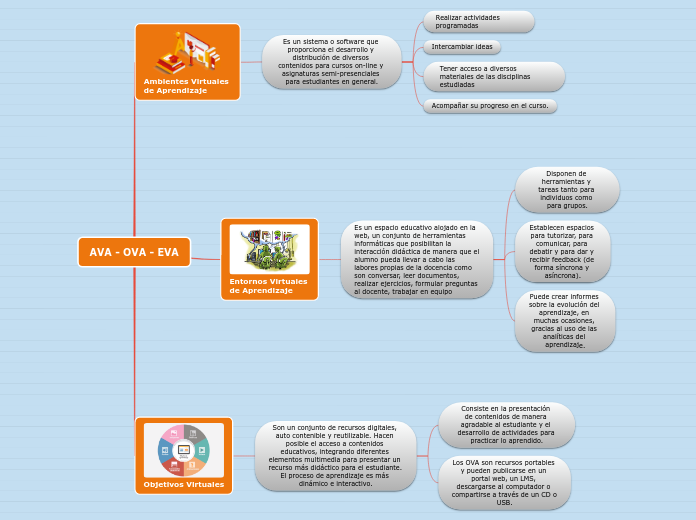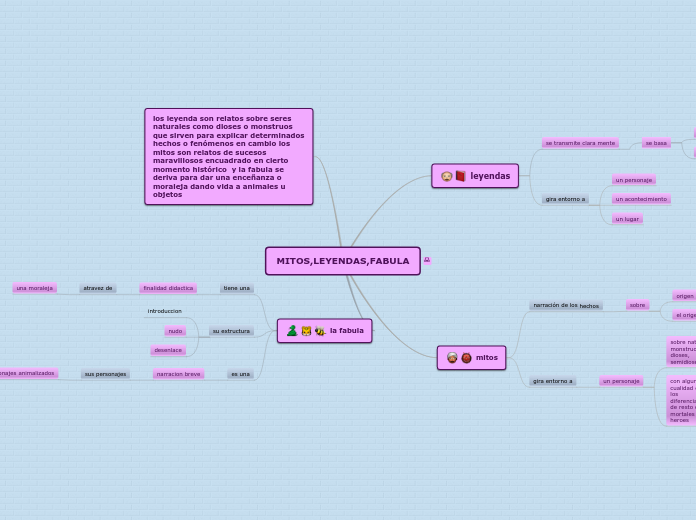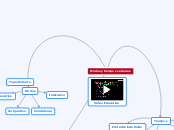DIDÁCTICA Y CURRICULUM: CAMPOS DISCIPLINARES
The Solar System is the gravitationally bound system of the Sun and the objects that orbit it, either directly or indirectly. Of the objects that orbit the Sun directly, the largest are the eight planets, with the remainder being smaller objects, the dwarf planets, and small Solar System bodies.
REFLEXIÓN FINAL
Saturn is known most for its rings.
Galileo Galilei first thought it was an object with three parts: a planet and two large moons on either side.
Not knowing he was seeing a planet with rings, the stumped astronomer entered a small drawing — a symbol with one large circle and two smaller ones — in his notebook.
The rings are made of ice and rock and scientists are not yet sure how they formed. The gaseous planet is mostly hydrogen and helium.
CURRICULUM Y DIDÁCTICA
El docente debe saber manejar todo lo que tiene que ver con el currículo, ya que es un área sustancial, a su identidad profesional y didáctica
Componentes muy importantes para quienes conforman la vida de la educación, pero más aún para quienes se están formando para ser maestro
Productos de procesos reflexivos y críticos con el que el docente desarrolla sus estrategias
PROFESIONALIZACIÓN DOCENTE
Uranus is an oddball. It has clouds made of hydrogen sulfide, the same chemical that makes rotten eggs smell so foul.
It rotates from east to west like Venus. Its tilt causes extreme seasons that last 20-plus years, and the sun beats down on one pole or the other for 84 Earth-years at a time.
Methane in the atmosphere gives Uranus its blue-green tint. It also has 13 sets of faint rings.
ESTRATEGIAS DE ENSEÑANZA
El domino de los contenidos y sus estrategias de enseñanza se subordina a maximizar el aprendizaje
Son la base en que se mueve la competencia del docente, claves de la competencia docente y del aprendizaje del alumno.
How long does it take for Uranus to go around the sun?
El docente debe analizar los datos de la evaluación en el aprendizaje profesional que se centra en la práctica docente dentro del marco escolar.
La profesionalidad del asesor se caracteriza por el "saber hacer"
A planet's day is the time it takes the planet to rotate or spin once on its axis.
Write down Uranus's day measured in Earth days.
IDENTIFICAR
Conduce a la revalorización del curriculum en acción y de la metodología didáctica
Estudia las dimensiones para trabajar a nivel de centro, que es preciso para reclamar de la política educativa para un mejor aprendizaje
Aspectos de la práctica docente que debe alterarse
IDENTIDAD DIDÁCTICA: RECONSTRUCCIÓN
Neptune is about the size of Uranus and is known for supersonic strong winds.
Neptune is far out and cold.
The planet is more than 30 times as far from the sun as Earth.
Neptune was the first planet predicted to exist by using math, before it was visually detected. Neptune is about 17 times as massive as Earth and has a rocky core.
PRÁCTICAS DE ENSEÑANZA
Se constituye en el objeto de la teorización didáctica
APRENDIZAJE
Enseñanza que es objeto de la didáctica
Objeto perteneciente a la psicología principalmente
Neptune has thirteen moons that we know of and one more waiting for confirmation.
The largest moon is slightly smaller than Earth's Moon and has active volcanoes which erupt like geysers and eject nitrogen frost over the surface.
Name this moon and at least 4 others.
IDENTIDAD DE LA DIDÁCTICA
La reivindicación identitaria dentro de la teoría de enseñanza se absorbe por el cambio en el objeto de estudio.
How long does it take for Neptune to go around the sun?
TRADICIÓN NORTEAMERICANA
La didáctica es reemplazada por sus objetos de conocimientos.
A planet's day is the time it takes the planet to rotate or spin once on its axis.
Write down Neptune's day measured in Earth days.
TRADICIÓN EUROPEA
Teoría de la enseñanza que se confunde con la psicología educacional
DIDÁCTICA Y CURRICULUM
It was once considered a planet but in August 2006 the International Astronomical Union (IAU) downgraded the status of Pluto to that of “dwarf planet.”
Pluto is unlike other planets in many respects. It is smaller than Earth's moon; its orbit is highly elliptical.
It's a cold, rocky world with a tenuous atmosphere. Pluto is a very active ice world that's covered in glaciers, mountains of ice water, icy dunes, and possibly even cryovolcanoes that erupt icy lava made of water, methane or ammonia.
CURRICULUM
No neutral
Conocimiento seleccionado y organizado
Organización de todos los elementos
Qué enseñar
How long does it take for Pluto to go around the sun?
Metodología
Cómo enseñar
DIDÁCTICA EN LA SOCIEDAD DEL CONOCIMIENTO
Jupiter is a giant gas world that is the most massive planet in our solar system.
Its swirling clouds are colorful due to different types of trace gases.
And a major feature in its swirling clouds is the Great Red Spot, a giant storm more than 10,000 miles wide. It has raged at more than 400 mph for the last 150 years, at least.
Jupiter has a strong magnetic field, and with 75 moons, it looks a bit like a miniature solar system.
ELOMORE, 2010
Todo lo que no está en el núcleo didáctico sólo puede afectar al aprendizaje y desempeño de los alumnos, por la vía de influenciar, en algunas medidas,
How long does it take for Jupiter to go around the sun?
SOCIEDAD DEL CONOCIMIENTO
La didáctica se abre en nuevos contextos del aprendizaje permanente más allá de la enseñanza tradicional dedicada a la transmisión de información.
A planet's day is the time it takes the planet to rotate or spin once on its axis.
Write down Jupiter's day measured in Earth days.
PROCESO DE APRENDIZAJE
Desarrollados en entornos educativos dentro del ecosistema digital que se inscriben en los Entornos Personajes del Aprendizaje.
Subtopic
TRIÁNGULO PEDAGÓGICO
Mars is a cold, desert-like place covered in dust. This dust is made of iron oxides, giving the planet its iconic red hue.
Mars shares similarities with Earth: It is rocky, has mountains, valleys and canyons, and storm systems ranging from localized tornado-like dust devils to planet-engulfing dust storms.
ALUMNO
El propio alumno desarrolla un papel activo dentro del proceso de aprendizaje
CONTENIDOS
Conjunto de información, datos, experiencias, teorías e ideas que el profesor transmitirá al alumno
DOCENTE
Persona que transmite el conocimiento al alumno a través de una serie de estrategias educativas
DOBLE DIMENSIÓN DEL CONOCIMIENTO DIDÁCTICO
Earth is a water world, with two-thirds of the planet covered by oceans.
It's the only world known to harbor life.
Earth's atmosphere is rich in nitrogen and oxygen.
Its name originates from 'Die Erde,' the German word for 'the ground.'
Earth may once have had two moons, nowadays it has just one.
ASPIRA
En la guía de normativizar las prácticas educativas haciendo énfasis en las metodologías que resultan más eficaces.
A planet's day is the time it takes the planet to rotate or spin once on its axis.
Write down the Earth's day in hours.
PRETENDE
Describir los procesos de enseñanza y aprendizaje.
DIDÁCTICA
Venus is Earth's twin in size and has no moons.
Its surface has various mountains and volcanoes. Because of its thick, toxic atmosphere that's made of sulfuric acid clouds, Venus is an extreme example of the greenhouse effect. The average temperature on Venus' surface is 900 F (465 C).
Venus spins slowly from east to west, the opposite direction to most of the other planets.
The Greeks believed Venus was two different objects — one in the morning sky and another in the evening. Because it is often brighter than any other object in the sky, Venus has generated many UFO reports.
¿Para qué sirve?
Ayuda con el desarrollo personalmente o de forma profesional de los sujetos.
Centralizar los procesos educativos intencionados en contextos escolares con el fin de promover el aprendizaje.
A planet's day is the time it takes the planet to rotate or spin once on its axis.
Write down Venus's day measured in Earth days.
¿Qué es?
Determinar las metodologías para contribuir en los procesos del saber docente.
Amplio cuerpo de conocimientos
LA ENSEÑANZA NO ES UNA ACTIVIDAD IMPROVISADA ES UNA PRÁCTICA INFORMADA
Mercury is the smallest, only a little bit larger than Earth's moon. Mercury has no moon.
It experiences dramatic changes in its day and night temperatures: Day temperatures can reach a scorching 840 F (450 C), which is hot enough to melt lead. Meanwhile, on the night side, temperatures drop to minus 290 F (minus 180 C).
It also has a very thin atmosphere of oxygen, sodium, hydrogen, helium, and potassium and can't break-up incoming meteors, so its surface is pockmarked with craters, just like the moon.
PRÁCTICA INFORMADA
Ayuda a que se aprenda a enseñar desde la práctica docente y compartir los conocimientos acumulados sobre la metodología, descubriendo los modos más efectivos en el aprendizaje.
How long does it take for Mercury to go around the sun?
¿Por qué no se debe dejar a la improvisación?
Al haber organización hay mejor desarrollo en los procesos de enseñanza.
A planet's day is the time it takes the planet to rotate or spin once on its axis.
Write down Mercury's day measured in Earth days.
No debe dejarse a la improvisación.
Tampoco se cuenta con una guía que nos lleve a cumplir los objetivos.
Our Solar System has eight “official” planets which orbit the Sun.
Each planet is at a different distance from the sun. Name its position.









